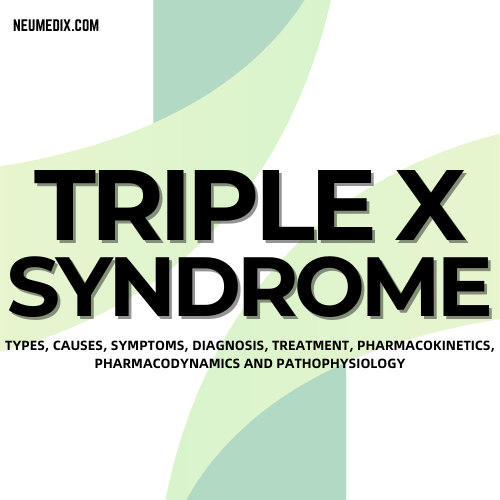What is Triple X Syndrome?
Triple X syndrome is a genetic condition that affects females, characterized by the presence of an extra X chromosome in each cell, resulting in a total of three X chromosomes instead of the typical two.
Symptoms:
- Physical Features:
- Tall stature
- Narrow hips
- Long limbs
- Slightly broadened nasal bridge
- Epicanthal folds (skin folds covering the inner corner of the eye)
- Low muscle tone
- Cognitive and Developmental:
- Mild learning disabilities
- Delayed speech and language development
- Problems with attention and executive function
- Behavioral difficulties, such as shyness or social anxiety
- Medical Issues:
- Delayed onset of puberty
- Menstrual irregularities
- Infertility
- Increased risk of certain medical conditions, including autoimmune disorders and seizures
Causes:
Triple X syndrome typically results from a random error during the formation of reproductive cells or early fetal development, leading to the presence of an extra X chromosome. It is not typically inherited from parents.
Diagnosis:
Diagnosis of Triple X syndrome can be made prenatally through chorionic villus sampling (CVS) or amniocentesis, which involves analyzing cells from the placenta or amniotic fluid. Postnatally, it is confirmed through chromosomal analysis (karyotyping) of a blood sample.
Pharmacokinetics:
There are no specific pharmacokinetic considerations related to Triple X syndrome.
Pharmacodynamics:
Similarly, there are no specific pharmacodynamic considerations related to Triple X syndrome.
Pathophysiology:
The presence of an extra X chromosome can disrupt normal cellular function and development, leading to the characteristic features and symptoms associated with Triple X syndrome. However, the exact mechanisms by which this occurs are not fully understood.
Pharmacological Treatment:
Pharmacological treatment for Triple X syndrome focuses on managing symptoms and associated conditions. This may include:
- Hormone therapy to address menstrual irregularities or delayed puberty
- Medications to manage behavioral symptoms, such as anxiety or attention deficits
Non-pharmacological Treatment:
Non-pharmacological interventions are often an integral part of managing Triple X syndrome and may include:
- Early intervention programs for developmental delays
- Speech therapy
- Educational support tailored to individual needs
- Counseling and psychological support for both the individual and their family
Conclusion:
Triple X syndrome is a chromosomal disorder that affects females and is characterized by the presence of an extra X chromosome. While it can present with physical, cognitive, and developmental challenges, early intervention and appropriate support can significantly improve outcomes and quality of life for individuals with Triple X syndrome.
It’s essential for individuals with Triple X syndrome and their families to work closely with healthcare professionals to address any medical or developmental needs and to access the necessary support services. Ongoing research into the underlying mechanisms of the condition may also lead to improved understanding and treatment options in the future.




